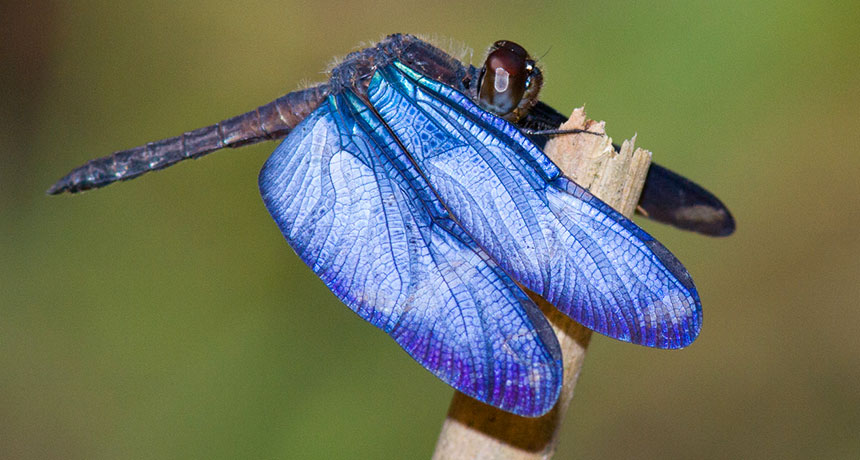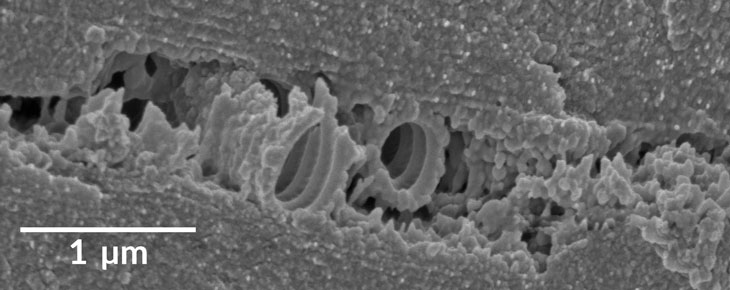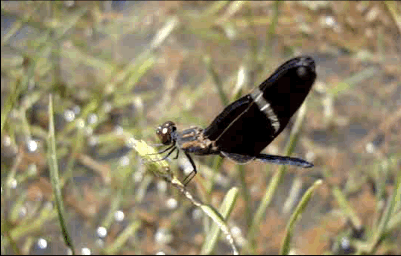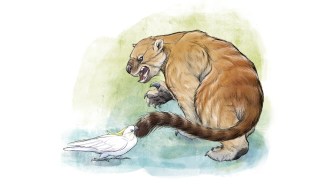The blue wings of this dragonfly may be surprisingly alive
Adults go to great lengths to shine blue

STRANGER WINGS Among natural blues, the wings of this morpho dragonfly create color in a really complicated way.
GREG LASLEY/INATURALIST.ORG (CC BY-NC 4.0)
An adult insect wing is basically dead.
So what in the world were tiny respiratory channels doing in a wing membrane of a morpho dragonfly?
Rhainer Guillermo Ferreira was so jolted by a scanning electron microscope image showing what looked like skinny, branching tracheal tubes in a morpho wing that he called in another entomologist for a second opinion. Guillermo Ferreira, then at Kiel University in Germany, showed the image to a colleague who also was “shocked,” he remembers. A third entomologist was called in. Shock all around.
The shimmering, bluest-of-skies wings of male Zenithoptera dragonflies might be unexpectedly and fully alive, Guillermo Ferreira says. That bold idea will take some testing. So for now, he and colleagues report the unusual tracheal respiratory system, the first in any insect wing as far as they know, in the May Biology Letters.
Story continues after image

Wings of insects start as living tissue, but as the creatures take their adult form, cells die between the strut work of supporting wing veins. The dried-out zones can go cellophane-clear or cover themselves in color, bordered by the vein network like the glass pieces in a cathedral window. The veins, as they’re called, have their own respiratory tubes, nerves and such. But entomologists thought the rest of an insect wing would be no more alive and in need of oxygen than toenail clippings.

In the tough inner layers, male Z. lanei wings form nanoscale spheres sandwiched between blankets of black pigment–filled nanolayers. This setup can enhance reflections of blue light and muddle other wavelengths. On top are two more light-trick layers, each made of wax crystals. The uppermost crystals, Guillermo Ferreira found, are shaped “like little leaves.”
Better blues might help a male intimidate rivals for breeding territory around the edges of their palm tree swamp homeland. Male dragonflies don’t just dart and bluff. Guillermo Ferreira often sees a male “rushing toward the rival, grabbing the wings, biting the wings and then sometimes biting the head.”
In spite of the world-class color nanogadgetry, males aren’t known for courtship displays, he says. “The female just flies in, and he just grabs her.”
Editor’s note: This story was updated July 17, 2017, to correct the video credit.







